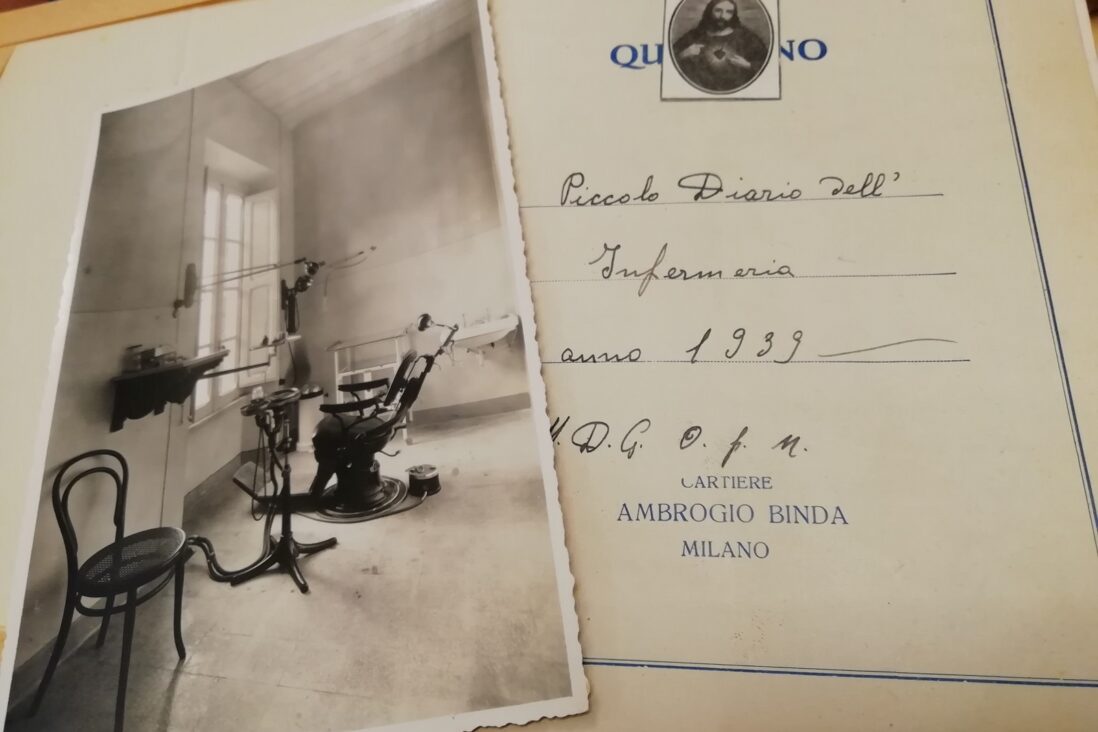Aches, pains and deaths: the infirmary diary

Jesuits, like all of us, are subject to illnesses and physical problems, an aspect that is more difficult than others to trace in archival documentation.
For deceased Jesuits, in fact, clinical reports, medical prescriptions, and results of diagnostic tests are usually discarded because they are not considered useful or necessary for permanent preservation. Some references to the health of the fathers can be found in the medical certificates enclosed with the documentation for entry into the novitiate; physical and psychological health is always attested by a doctor.
In the house diaries one can find information on sudden illnesses of some superiors or rector, especially if they occurred after a particular episode (fainting, seizures, falls). The obituary of each Jesuit reports the cause of death, if it was not death from natural reasons or related to old age, but these are often brief references, as brief are the medical indications about the reasons why Jesuits left the Society of Jesus.
There are therefore no specific sources dedicated to the health of the fathers, at least until the reorganisation of the Veneto – Milanese Province’s fund when the diary of the infirmary of the Gallarate philosophate was found. Every residence had a more or less large and well-equipped infirmary, it was the colleges and communities with more Jesuits that had areas expressly dedicated to the infirmary, either for short illnesses or long convalescences, in some cases even the isolation of infectious patients.
Not all infirmaries had their own diary, very often any deaths or relevant clinical events flowed into the narrative recorded in the house diary. This diary, compiled on the same premises as the infirmary, records in great detail the admission of sick fathers, the diagnosis and the clinical development of the diseases encountered, unfortunately no earlier or later diaries have been found.
Let us read a few examples to realise what data the source can offer.
Many hospitalisations are caused by seasonal ailments: flu or sore throat, or minor ailments such as gastritis, or by accidents: sprained ankles, falls causing brittle bones to break in elderly fathers. There are also more serious cases, such as Brother Shits, who in February 1939 has continuous ‘outbreaks of blood’ and is diagnosed with consumption, he is treated with ‘calcium chloride by mouth and coagulant by injection, ice pack on his chest, absolute immobility. Cold diet’. In the following days he was given injections of other drugs, four a day and two of stripticin. The brother would die on 2 March, at the age of 24, with a diagnosis of miliaric consumption.
Brother Luigi Bertuletti’s back pain was treated with the Bertelli plaster and some Arcanol powder after meals. Among the most frequent remedies were: frictions of antibacterial ointment iodo – guaiacolate, belladonna powders, vegetal – mineral water.
For many cures, traditional methods were followed, as in the case of Brother Consonni, to whom two leeches were applied under the mastoid and extreme unction administered, he would unfortunately die a week later.
The fathers and brothers hospitalised here were cared for by a doctor who came several times to visit them, while for examinations and specialist visits they had to go to the nearby hospital or to experts, as in the case of the ophthalmologist who had to prescribe glasses and treatment for three schoolchildren.
Extreme unction, precisely because of the impossibility of predicting the course of some illnesses, was often given. The diary reports that, for some Jesuits, surgical operations were necessary, especially concerning the appendix or complex fractures.
The cases of Brother Salvatore, who complains of ‘severe pain in the thumb finger of his left hand, following a cow bite’ and of Brother Villa ‘following an injection made a little superficial he has a considerable redness in his left buttock, now he is kept in bed with warm antiseptic compresses’ are curious.
Other recurrent ailments are: periostitis, colitis, colic. Treatments sometimes consist of restorative injections, others of cod or castor oil, sometimes bitter drops are prescribed to stimulate the appetite. The names of many medicines also recur: aspirin, Chloral (a sedative), Fibrolizine, ampoules of vitamin Zef, nucleatin, potassium bromide, sodium bromide, Effedril syrup.
The diary could prove to be a very interesting source for those studying the history of medicine, but also for those who would like to test the effects of the cow bite!
Maria Macchi











